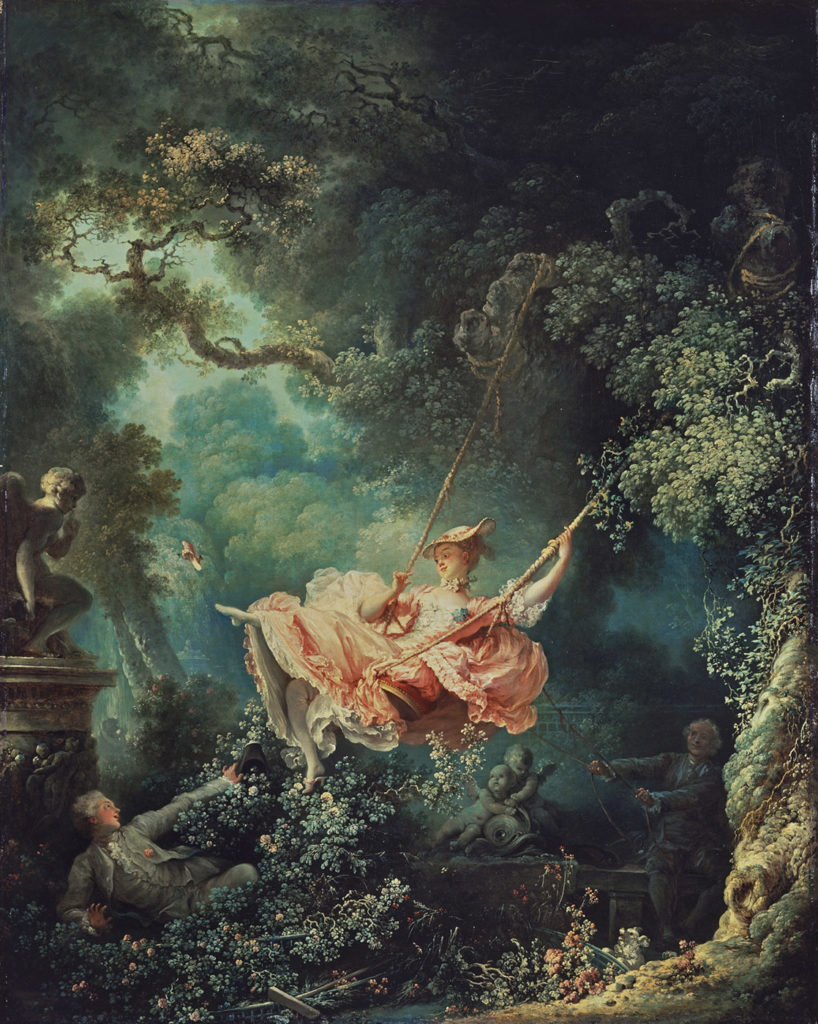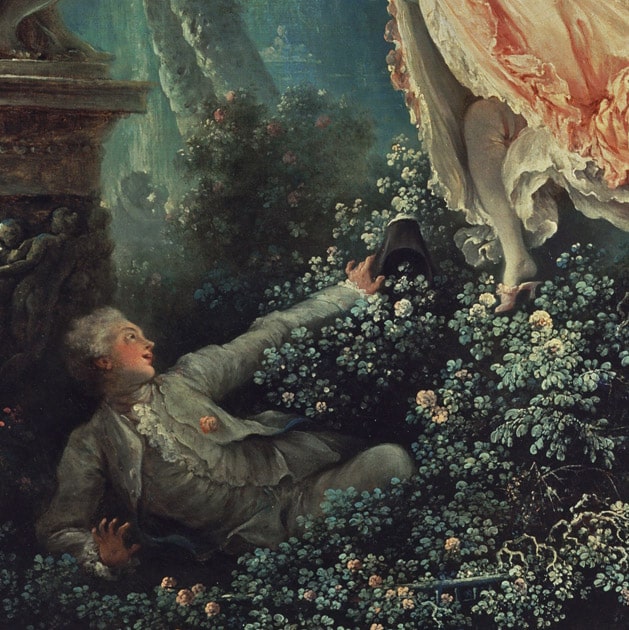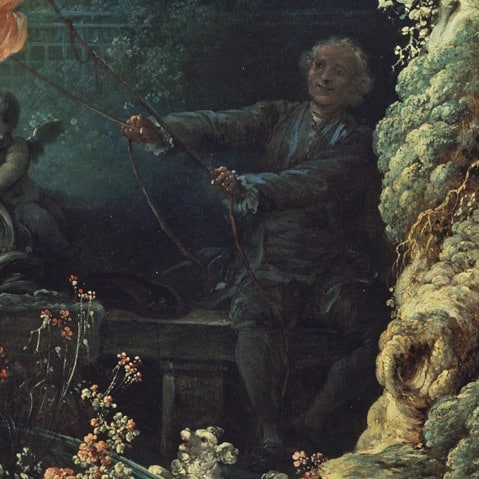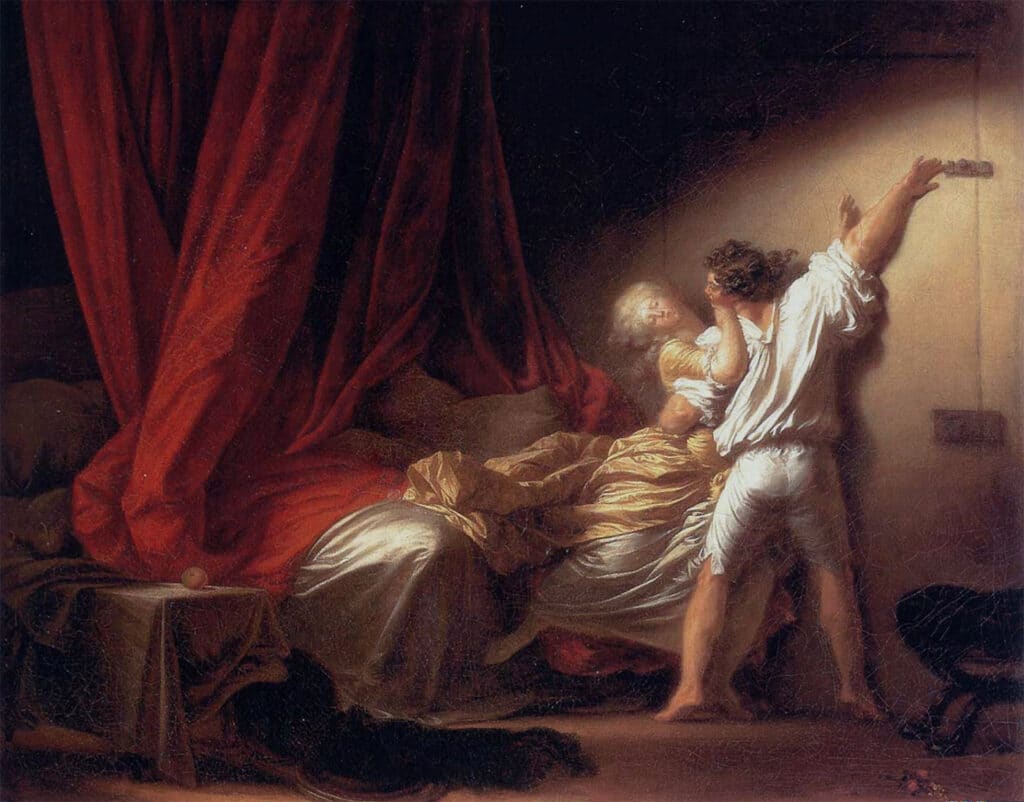Why Does Fragonard Paint The Young Lady In The Swing As Losing A Shoe?

You lot may know this painting by Jean-Honoré Fragonard, The Swing (in french: Les Hasards heureux de l'Escarpolette), which depicts a gallant scene typical of the Rococo movement. But do you know its history and meaning? Zoom on this famous painting…
The guild of the Businesswoman of Saint-Julien
In 1767, the Baron of Saint-Julien wanted to accept a painting fabricated of him in the company of his mistress, with a very precise thought of the scene :
"I would like y'all to paint madame on an escarpolette that a bishop would set up in motion. You will place me in such a way that I will be within achieve to see the legs of this beautiful child, and even better, if you lot want to brighten upwards your painting more than."
He starting time approaches the painter Gabriel-François Doyen who refuses the committee, judging it too frivolous and who directs him towards Jean-Honoré Fragonard, a young painter already reputed to treat libertine subjects. Apparently, Fragonard accepted and painted the canvas between 1767 and 1769.

Assay of the work
In the middle of the painting stands a immature woman, the Baron's mistress, on a swing. She mischievously throws her shoe – a sign of sensuality – towards her lover (the Baron) revealing at the same fourth dimension her talocrural joint, which at the time had an eminently erotic connotation!

By "a happy coincidence", the lover is located in the right identify to see the legs (or even more?!) of his mistress: a vision that disturbs him to the point of making him lose his residue and invert him in the flowers.
On the far right, the bishop desired by the Businesswoman has been replaced by Fragonard by a deceived husband who pushes the swing with a smile on his face without suspecting that his wife is having fun with another human.
On the left side, a Putto, symbol of Love, holds a finger to his lips and invites us to keep silent… A manner to invite the spectator into confidence!
-

The lover -

The deceived married man -

Putto, symbol of love
A French painting arrived in London
This type of painting is all the rage among the dignity. They are intended for the private apartments of their patrons. Just with the evolution of morals, when the Businesswoman of Saint Julien is condemned to death during the Revolution, libertine scenes are no longer in style…
Fragonard'south painting reappeared during the Second Empire in the collection of Napoleon 3'southward half-brother, the Duke of Morny. Later bought by the English collector, the Marquis d'Hertford, it was bequeathed to his natural son Richard Wallace who founded the prestigious Wallace Collection in London where the painting can exist admired today!
A happy coincidence that made Fragonard famous…
Equally for Fragonard, he was successful thanks to this painting which was notably taken up and popularized in an engraving past Nicolas de Launay. The painter received numerous commissions for licentious paintings such as the famous Bolt that he painted in 1777 for the Marquis de Véri.

Even today, this work continues to radiate thank you to many detour, we fifty-fifty discover it included in the Disney cartoon, the Snow Queen!

Jean-Honoré Fragonard (1732 – 1806)
The Swing – Les Hasards heureux de 50'escarpolette (1767-1769)
81 10 60,two cm
London Wallace Drove
Source: https://culturezvous.com/en/analysis-fragonard-the-swing/
Posted by: glassdiedich.blogspot.com

0 Response to "Why Does Fragonard Paint The Young Lady In The Swing As Losing A Shoe?"
Post a Comment